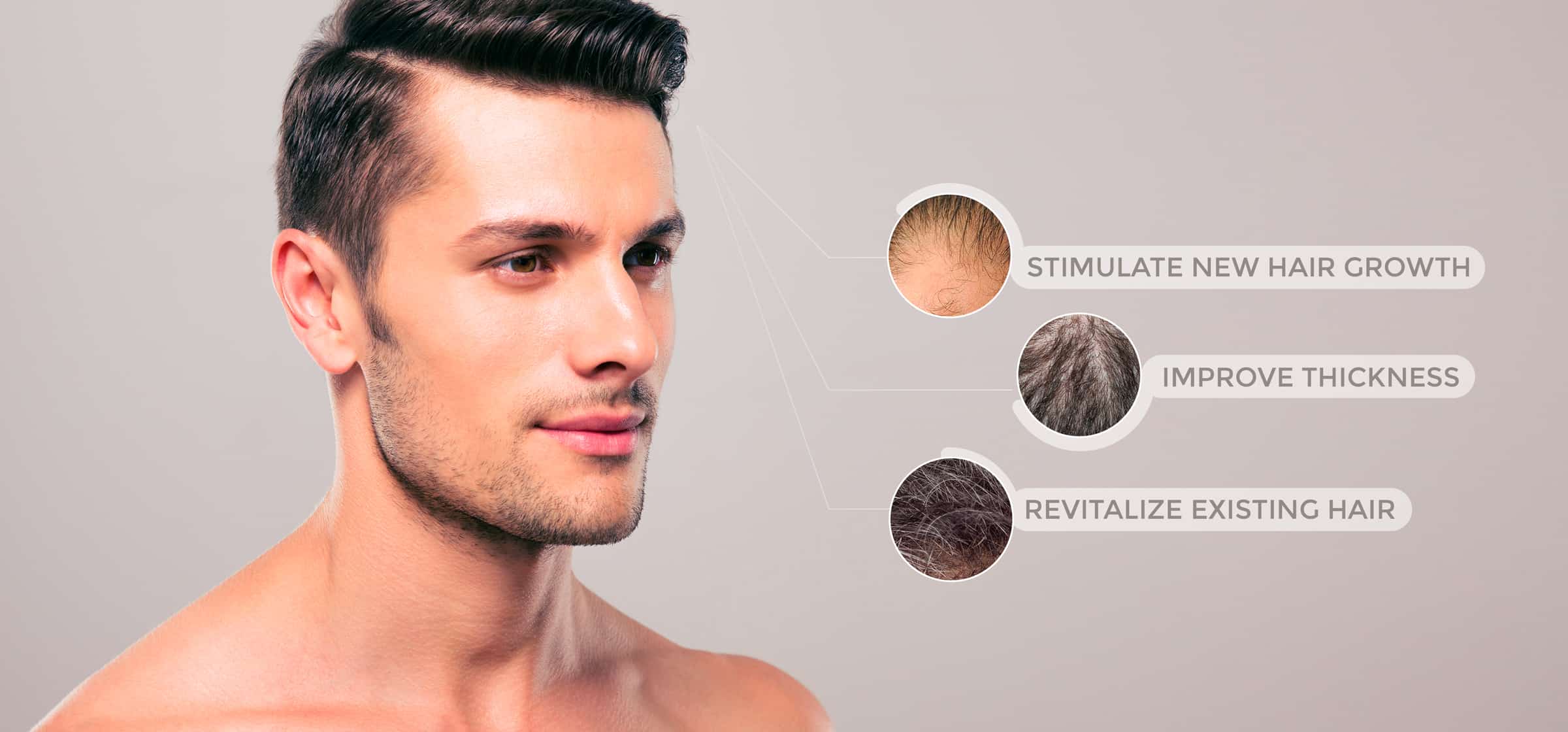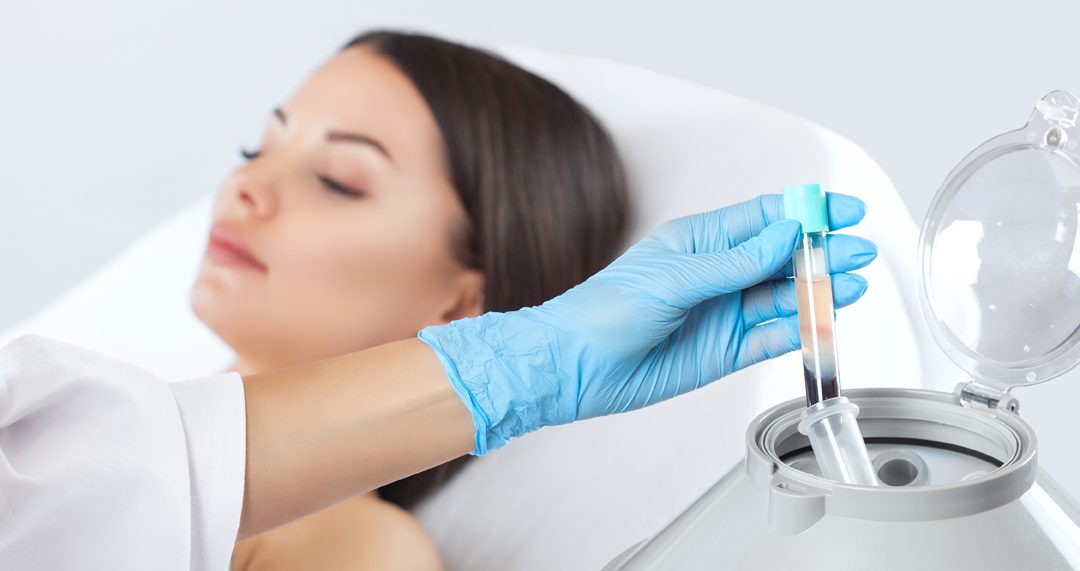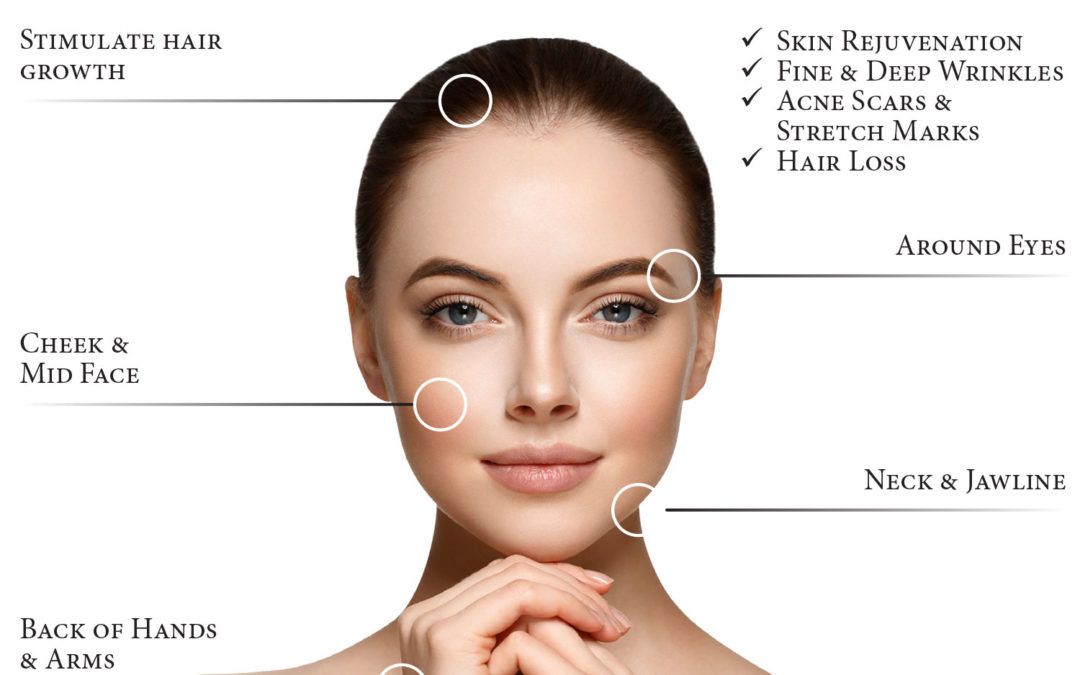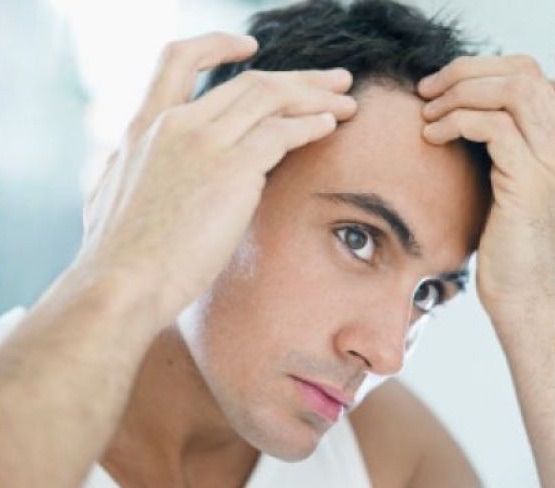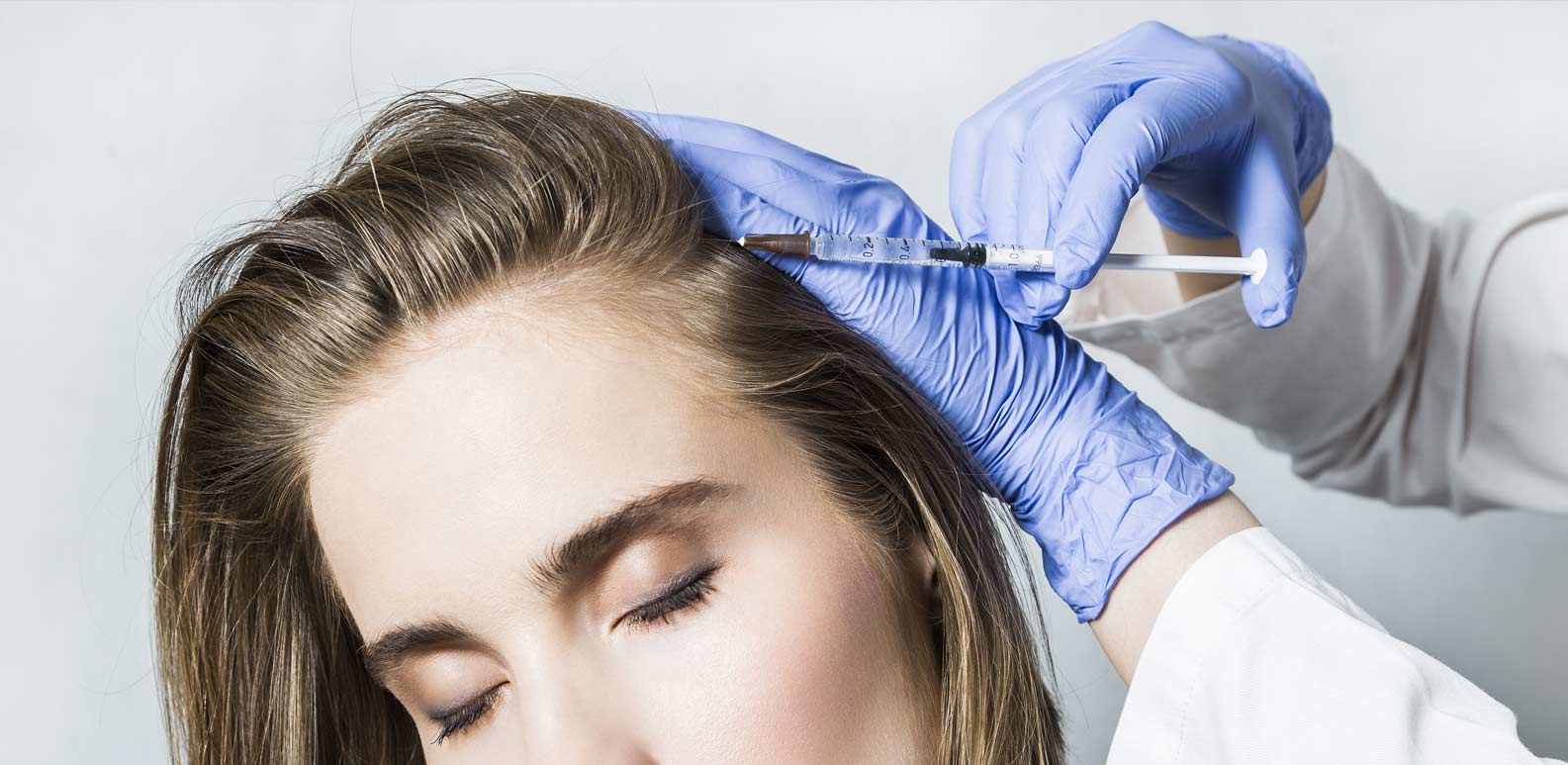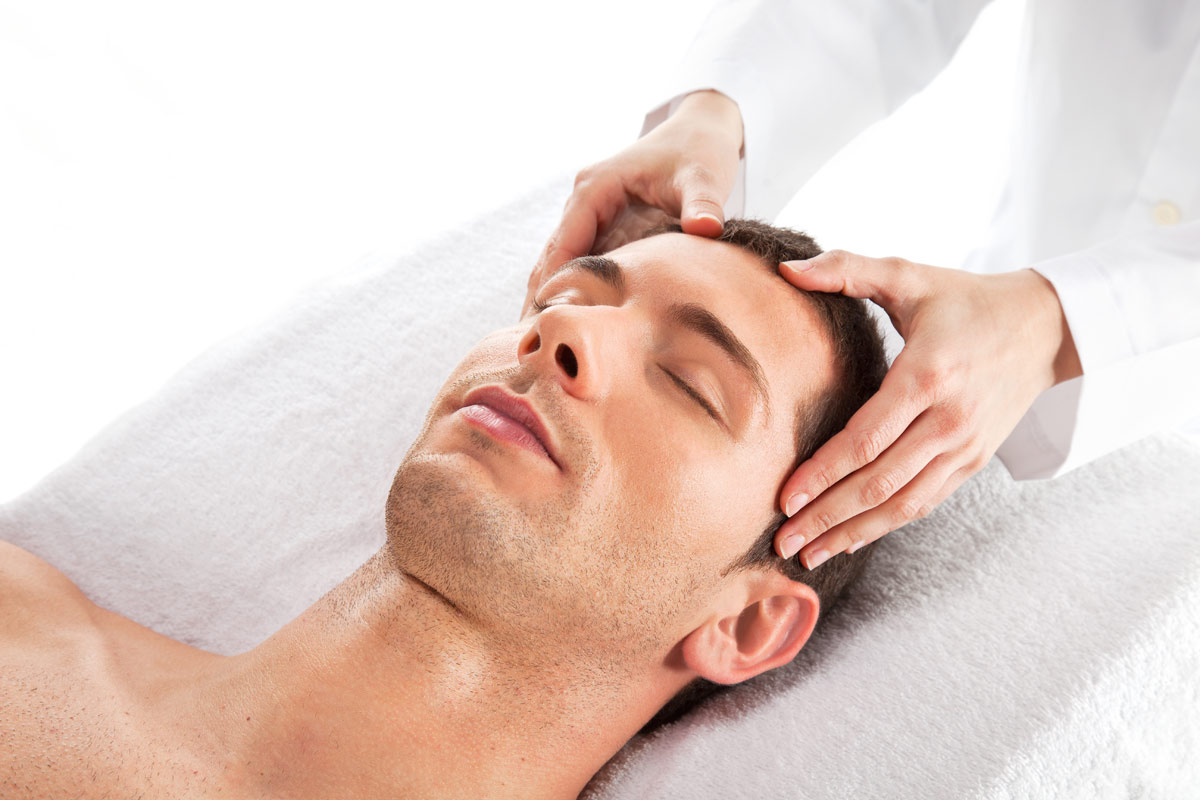- How it works
- What is involved with PRP treatment?
- How does PRP help hair loss?
- Where else can you use PRP Therapy?
- Pre-treatment instructions
- Day of treatment instructions
- Post-treatment instructions
PRP is your own blood enriched by platelets to help stimulate the development of collagen and other components that help skin look younger and healthier. PRP contains growth factors and proteins called cytokines that help heal age and sun-related damage in the skin. Since PRP is naturally created by your own body, it eliminates risks associated with donor genetic materials such as allergies, hypersensitivity, and other adverse reactions. Many patients are also drawn to the natural qualities of using elements of their own body rather than chemicals or donated cells.
A small amount of blood is drawn from you and placed in a sterile tube that is spun down in a centrifuge to separate the different components of the blood. Red and white blood cells are divided from the platelets and the plasma (the clear fluid). This plasma now contains a higher than normal number of platelets and is called platelet rich plasma, or PRP.
When used to stimulate the restoration of hair follicles, studies have shown it to be very effective. The PRP recruits new hairs to grow, keeps the hairs growing that still are, and targets the stem cells surrounding the follicle to minimize the thinning of the actual hairs being produced.
- Dark Circles and Eye Bags – The growth factors found in blood platelets help to jumpstart the production of collagen and generates new capillaries while activating and rejuvenating the body’s cells and skin.
- PRP in conjunction with resurfacing treatments such as microneedling, microneedling radio frequency, and eMatrix have shown an increase in effectiveness and faster healing times.
- Skin rejuvenation – PRP injected into specific areas of the skin, act as a matrix that promotes your own collagen to grow, regenerates tissue, and thus acts as to naturally smooth and tighten the skin. In this way, PRP softens wrinkles and creating smoother skin texture and tone.
- 6 months before avoid Accutane
- 7 days prior avoid IPL/Laser procedures
- 5-7 days prior no waxing, depilatory creams or electrolysis (if treatment includes peel)ho
- 5-7 days prior no waxing, depilatory creams or electrolysis (if treatment includes peel)ho
- Avoid retinoids, topical antibiotics, exfoliants, hydroquinone, sunburn, and benzoyl peroxide 3 days prior to procedure.
- If use of a peel was recommended in conjunction with the micro-needling, no topical agents that may increase skin sensitivity, reaction to the peel, or dryness 3-4 days prior to the peel. This includes: topical retinoid,
hydroquinone products, acids, defoliants, alpha hydroxyl acid (AHA), beta hydroxyl acids (BHA), exfoliating masks, hydroquinone, or benzoyl peroxide acne products. If no peel, 24 hours without irritating products. - No shaving of area being treated on the day of the procedure
- See your physician for antiviral agent for 2 days prior to and day of treatment if history of cold sores
- Stop taking supplements that thin out the blood which increases bruising such as: green tea, Omegas (fish oil), primrose oil, vitamin E, Ginkgo biloba, aspirin (after consulting doctor)
- Omit lotions, creams, make up or deodorant in area to be treated
- Arrive with clean washed skin
- Update practitioner on any changes in skin condition, medical history, supplements, medications, and over the counter medicines
- Contraindications for treatment include active cold sores, herpes simplex, or warts in the area to be treated, open sores, sunburned, or excessively sensitive skin within the application area, pregnancy, dermatitis or inflammatory rosacea within the peel application area.
- Immediately after your PRP procedure, your practitioner may apply moisturizer and sunscreen topically.
- Redness or sensitivity might be present (and last up to a few days)
- Avoid anti-inflammatory medications such as ibuprofen, Motrin or Advil (unless instructed by your physician otherwise). These agents will interfere with the natural inflammatory process that is critical for results.
- Use Tylenol only as needed for any soreness
- Avoid sun tanning and prolonged exposure to direct sunlight. When exposed to sun, always use sun screen SPF30 or above.
- Do not pick or scratch at treated skin but instead keep moisturized
- Eat fresh pineapple to optimize healing
- Avoid strenuous exercise or sweating for 24 hours due to open pores
- You may cleanse the area with cool water, pat dry no earlier than 4 hours after treatment.
- Cool compresses may be applied for excessive discomfort, burning, redness, or swelling
- Avoid sun exposure for 3 days and if possible 10 days. Apply a minimum of SPF 30 every 2 hours.
- Mineral makeup in treated area may be applied after 24 hours.
DAY 1: Multiple treatments are recommended for best results (series may range from of 3 – 5 treatments). The day after the treatment skin may be gently washed with a gentle cleanser, cool water, using hands only and pat dry. Stay away from exfoliants, alchohol based products or acids that are present is cleaners as these can make your skin very dry after the procedure. Be sure to use an approved SPF30 or greater sunscreen.
DAYS 2-7: Within two (2) days following your procedure, you will notice skin dryness and flaking. This is due to an increased turnover of skin cells. During this period, you may apply your regular skin moisturizer. Follow the instructions given to you by your practitioner. Days later, your skin will start shedding. These are skin layers that would regularly shed a week later, but the PRP brings this skin to the surface sooner. During this temporary process, your skin will shed and be dry. You may use your regular skin care products once your skin is not irritated.
DAYS 8+: Most patients indicate a reduction of hair loss post treatment. Your provider may suggest a series to help achieve desired results.
